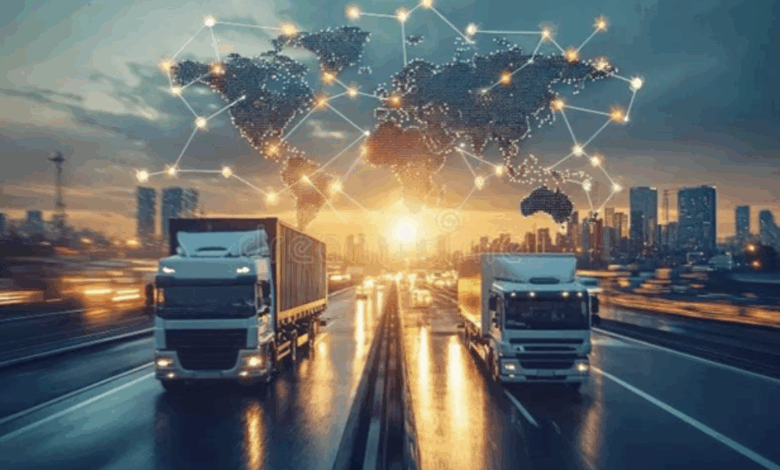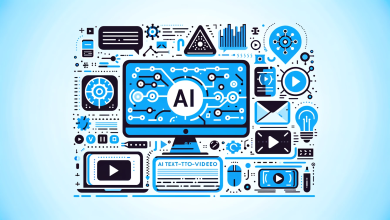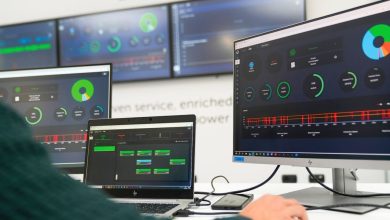
When you’re waiting on a package, a late delivery is frustrating. But when the delivery is a $200,000 boat or a fleet of new SUVs headed to dealerships across the country, “frustrating” quickly becomes “expensive.” In large-scale transportation, every hour of delay can trigger storage fees, lost sales opportunities, idle crews, or penalties written into contracts.
For decades, the way to manage these delays was reactive. If a hauler ran into highway gridlock, the dispatcher might hear about it two hours later. If a port closure slowed a shipment, the ripple effect could take days to surface. By then, it was often too late to avoid cascading disruptions across the network.
Today, that’s changing. Predictive analytics and artificial intelligence are giving logistics providers something we’ve never really had before, a way to see trouble coming and act before it hits.
This isn’t just about getting from Point A to Point B faster. It’s about protecting high-value assets, safeguarding customer trust, and turning an unpredictable industry into one that runs with confidence.
Big Deliveries, Bigger Risks
Transporting a car, yacht, or heavy-duty construction machine is not like moving a sofa or a few pallets of goods.
Regulations: Oversized loads require special permits, approved routes, and sometimes even escort vehicles. A missed permit deadline or reroute can add days to a schedule.
Limited windows: Ports, dealerships, and storage facilities often operate on strict appointment systems. Miss your slot, and you could be waiting until next week.
Value concentration: One trailer might carry half a million dollars in cargo. That means the cost of delay isn’t just about the driver’s time, it’s tied directly to asset depreciation, financing terms, and downstream commitments.
With stakes this high, “we’ll deal with it when it happens” is no longer acceptable. That’s where AI-driven foresight makes the difference.
From Weather Reports to Predictive Models
In the past, the best a dispatcher could do was check a weather map, glance at traffic updates, and rely on their gut. Useful, but far from comprehensive.
Predictive AI, on the other hand, can analyze years of historical data alongside live inputs traffic patterns, port congestion stats, customs processing speeds, weather systems, vessel tracking, even social media chatter about local events that might disrupt roads.
For example, the AI might detect:
- A port in Florida where vehicle offloading slows dramatically if a certain type of storm system appears offshore, even when it hasn’t yet hit.
- A recurring traffic bottleneck near a Midwestern rail hub every Thursday afternoon that adds 90 minutes to travel time for oversized carriers.
- A supplier’s shipping pattern anomaly that suggests their next production run will miss the original ETA, affecting downstream deliveries of equipment.
This isn’t guesswork. It’s a probability model refined by thousands, sometimes millions of data points. And it can surface these alerts hours or days before a human would otherwise see them.
The Domino Effect in Large-Scale Delivery
In small-package logistics, a delay might inconvenience one customer. In large-scale logistics, a single disruption can trigger a chain reaction.
Picture this: A flatbed hauling a luxury yacht gets rerouted due to a bridge closure the AI spotted 60 miles ahead. Without intervention, the driver would have hit the closure and lost three hours finding an alternate route. That three hours would have pushed the delivery into after-hours, forcing the crew that was scheduled to unload to go home. Now the unloading happens the next morning, which means the transport crew waiting to prep the yacht for a weekend buyer loses their slot and the sale potentially slips away.
By catching the problem early, AI allows dispatchers to make adjustments rerouting, rescheduling crew, or swapping delivery orders to keep the whole chain intact.
Marrying Human Judgment with Machine Insight
Some fear AI will replace dispatchers, but in reality, it’s a partnership. The AI might flag a predicted slowdown at a certain port, but a seasoned human dispatcher knows that one of their trusted captains has a personal contact who can expedite offloading in that scenario.
The AI handles the heavy lifting of processing thousands of variables in real time; the human adds nuance, context, and the relationship factor that machines can’t replicate.
This human-AI pairing is especially critical in high-value moves, where decisions aren’t just about speed but about asset safety, insurance compliance, and customer experience.
Predicting Maintenance Before It’s a Problem
In large-scale hauling, vehicle downtime is more than a headache; it’s a financial blow. AI can monitor subtle performance metrics from the trucks and trailers themselves fuel efficiency drops, tire wear patterns, brake pad degradation and predict the likelihood of a mechanical issue before it strands a vehicle mid-route.
The same goes for marine transport: sensors on vessels can feed AI systems that spot patterns in vibration, engine heat, or hull pressure that suggest service is needed before the next voyage. Avoiding just one en-route breakdown can save thousands in emergency towing, rescheduling, and missed delivery penalties.
Building Trust in a High-Value Market
In the luxury auto, marine, and heavy-equipment markets, buyers expect precision. The person waiting on a rare Italian sports car or a 60-foot catamaran isn’t just buying a product, they’re buying the experience of its arrival.
If you can tell that customer *in advance* that weather will delay their delivery by a day and you explain how you’re adjusting to minimize the impact you’re not eroding trust; you’re building it.
And in markets where trust is the differentiator, that foresight becomes a competitive advantage.
The Road (and Sea) Ahead
The future isn’t just AI models running in silos within each company, rather it’s interconnected predictive networks across the entire supply chain.
Imagine a scenario where the manufacturer in Alaska predicts their vehicle carrier will be 18 hours late to the Port of Newark. That information flows instantly to the American hauler, who reschedules their pick-up crew, and to the dealership, who updates their buyer with a precise, adjusted ETA.
No scrambling, no finger-pointing, no “we’ll see when it gets here.” Just coordinated, proactive planning across continents.
From Guessing to Knowing
When I started in this business, large-scale deliveries often ran on equal parts planning and luck. We’d build the best schedule we could, then cross our fingers against the unpredictable.
Now, with AI, we’re replacing luck with likelihood. We’re moving from “hoping it works out” to “knowing what’s coming and acting on it.”
Delays will never disappear entirely: there will always be unexpected storms, surprise inspections, or last-minute customer changes. But predictive analytics means we can approach those moments with strategy instead of scramble.
And whether you’re waiting for a box of books or a half-million-dollar yacht, the difference between reactive and proactive is everything.





